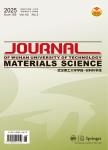版权所有:内蒙古大学图书馆 技术提供:维普资讯• 智图
内蒙古自治区呼和浩特市赛罕区大学西街235号 邮编: 010021

作者机构:Department of Paediatrics Wuhan General Hospital of Guangzhou Military Biomedical Materials and Engineering Center Wuhan University of Technology State Key Laboratory of Advanced Technology for Materials Synthesis and Processing Wuhan University of Technology
出 版 物:《Journal of Wuhan University of Technology(Materials Science)》 (武汉理工大学学报(材料科学英文版))
年 卷 期:2014年第29卷第3期
页 面:620-625页
核心收录:
学科分类:08[工学] 080501[工学-材料物理与化学] 0805[工学-材料科学与工程(可授工学、理学学位)] 080502[工学-材料学]
主 题:ROD Schwann cells cell behavior PDLLA-PRGD conduit sciatic nerve regeneration
摘 要:Schwann cells play a key role in peripheral nerve growth and regeneration. The aim of this study was to evaluate the effects of RGD peptides on Schwann cell behavior, and to identify the effects of the modified PDLLA films with RGD in vivo. The results revealed that RGD coating with the concentration of 100-500 ug/mL promoted the cell proliferation and boosted the cell migration. Molecularly, RGD coating also enhanced the expression of the proliferation related genes (c-fos and c-jun) and the cell behavior related genes (actin, tublin, tau and MAP1) at first stages of the seeding, which is similar to the effects from laminin coating. In vivo, RGD addition improved the recovery efficiency of the transected nerve in regard of the more survived Schwann cells in vivo and the formation of more mature myelin sheath. Taken together, RGD peptides are good candidates to enhance the biocompatibility of the biomaterials and facilitate the peripheral nerve regeneration by prompting responses in Schwann ceils.